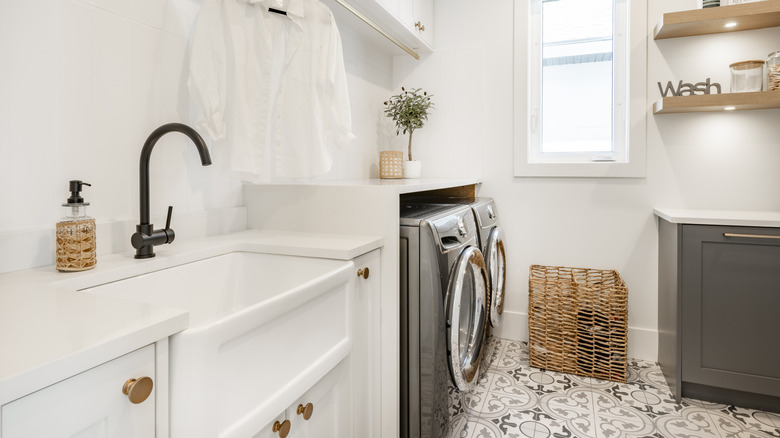Why You Should Consider Using Tile In Your Laundry Room
Are you tired of the builder-basic laundry room features in your home? Drywall on the walls and vinyl on the floor are common, but they don't exactly infuse your laundry room with personality. Plus, you get more protection from dampness (while creating a more efficient and stylish laundry room) with another material: tile. It's a versatile, durable option that can handle higher humidity and occasional spills. Because tile is less porous than other materials, it won't absorb water and it resists mold and mildew growth. Tile also wipes clean easily to help keep your laundry room tidy and hygienic.
Where should you put tile in a laundry room? Tiling the floor gives you a durable foundation that handles the weight of the washer and dryer well and can manage foot traffic without showing wear. On the other hand, vinyl flooring can sustain damage from heavy appliances. You can sweep and mop a tile floor easily to keep it clean in case you drop freshly-washed clothes on it. Further, if you're thinking about heating your laundry room from the floor up, tile is the flooring type that works the best with radiant heating.
Your laundry room walls also benefit from tile installation. Create a backsplash above your washer and dryer to protect your walls from laundry detergent or fabric softener spills. Compared to drywall, tiles wipe clean easily to remove any splatter or stray lint. You can also use tile to cover your laundry room countertops.
Choosing tile for your laundry room
Porcelain is a top choice for laundry rooms because it's hard and durable while being less porous. Finished ceramic tile is also a sturdy option, although it's softer than porcelain so it could crack or chip. Natural stone tiles are strong, but they may have a higher porosity than porcelain, which requires you to seal them regularly. Also, some varieties aren't as strong as porcelain and could break or scratch.
For floor tile, choose a textured material that's slip-resistant to keep your footing if the floor gets wet. If you have a tiny laundry room, installing larger tiles with thinner grout lines gives the feeling of more space. Alternating tiles to create patterns makes a design statement. Uniquely shaped tiles have the same effect. Think of it as a piece of artwork or room decor that shows off your style ideas. Patterned tiles could also help your laundry room feel more spacious.
Backsplash tiles offer more flexibility. Go simple with white subway backsplash tiling for a clean look or get creative with three-dimensional tiles, patterns, and bold colors. A glass tile backsplash reflects light to make the space look visually larger and brighter, and they come in a wide range of colors, textures, and shapes. You can also try complex tile layouts, such as herringbone or cross hatch. Interesting shapes, such as scalloped tiles, also let you go bold and create a fun, inviting space that makes laundry a little less daunting.

